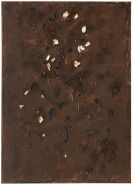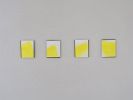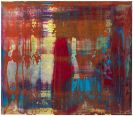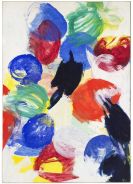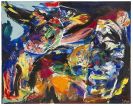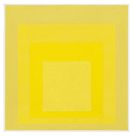
Conrad Westpfahl
Berlin
1891 -
Wetzhausen
1976
Conrad Westpfahl was born in Berlin on 23 November 1891, the son of the sculptor Ernst Westpfahl. In 1907 Conrad Westphal began to study under Emil Orlik at the school associated with the "Berlin Kunstgewerbemuseum". Since Westpfahl was dissatisfied with Orlik's teaching, he transferred to the Munich Art Academy in 1913, where he studied under the genre painter and portraitist Hugo Freiherr von Habermann.
A year later Conrad Westpfal was attending the private Académie Ranson in Paris as a pupil of Felix Vallotton's when the first world war broke out. Conrad Westpfahl served during the war as a battery commander and aviator. Returning to Berlin in 1918, he set up a studio. In 1925 Conrad Westpfahl showed work at the "Berlin Secession" group show and exhibited drawings at the Berlin Academy.
Westpfahl lived in Provence from 1926 until 1930, travelling from the South of France to Florence, San Gimignano, Castel Gandolfo and Paris, where Westpfahl settled from 1932. There Conrad Westpfahl produced his work, all of it abstract, and collages.
Conrad Westpfahl spent the years between 1934 and 1939 in exile in Greece, where he showed work twice at exhibitions in Athens, but returned to Germany in 1939. At that time Westpfahl became friends with Werner Gilles, Günther Franke, Fritz Winter and E. W. Nay.
In 1940, however, Conrad Westpfahl was forbidden to paint and he moved to Pöcking near Munich. His essay "Zur Kunsterziehung" ["On Art Education"] marked the beginning of Conrad Westpfahl's career as an art theorist. It was followed by "Entartete Kunst" ["Degenerate Art"], "Zur abstrakten Kunst" ["On Abstract Art"] (both 1947), "Wendung zur Gegenstandslosigkeit" ["Turning to the Non-Representational"] (1953) and "Ornament oder Emblem?" (1955).
In addition, Conrad Westpfahl gave numerous lectures on art. In the early 1950s Westpfahl entered on a phase of his work in which he abandoned the representational for abstraction; his first exhibition of purely abstract art was mounted by the Munich Kunstverein in 1952. Conrad Westpfahl was a guest at the Villa Massimo in Rome in 1961 and the following year at the Villa Romana in Florence. During the 1960s Conrad Westpfahl travelled extensively, mainly in Greece.
Conrad Westpfahl died in Wetzhausen in Lower Franconia on 23 July 1976.
Would you like to sell a work by Conrad Westpfahl?
Infos for seller
